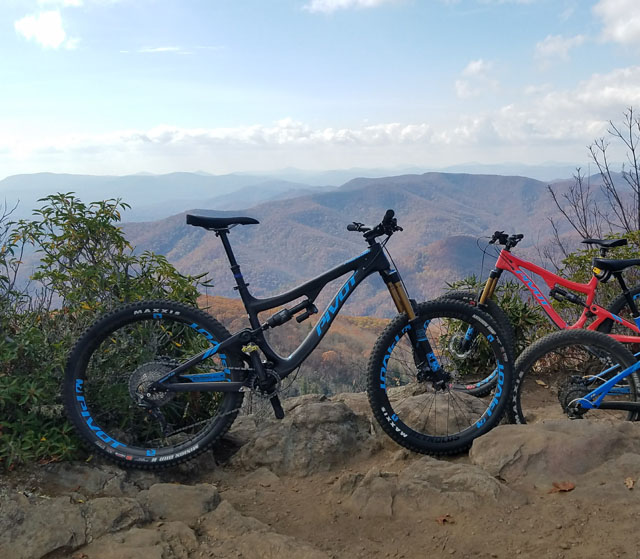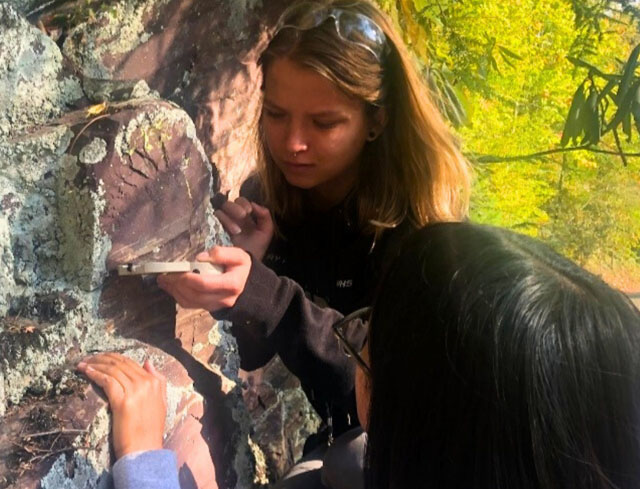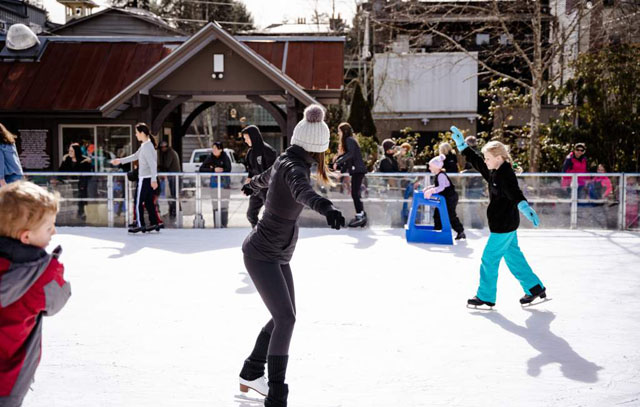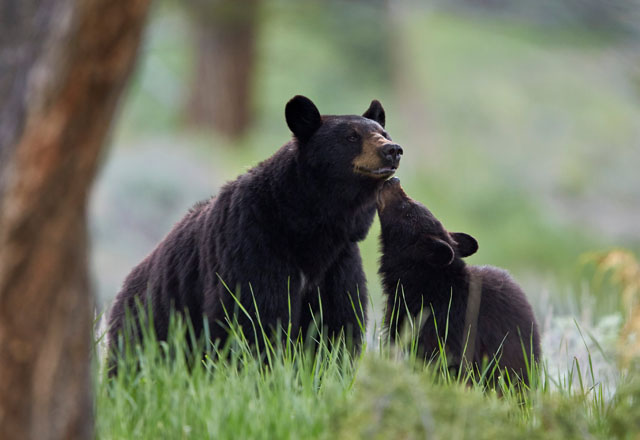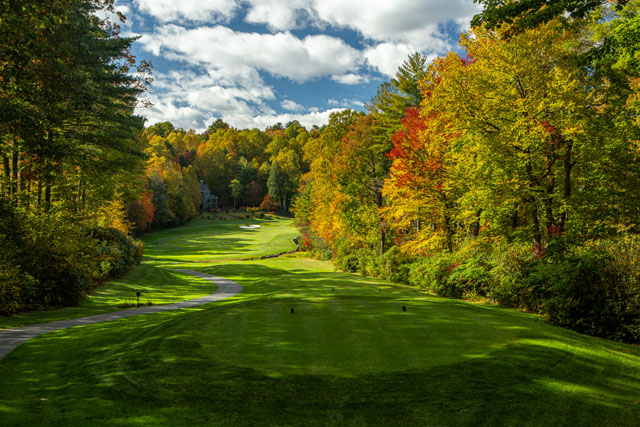The Foothills Trail
01 Jun 2023
Seventy-seven miles of pristine singletrack along the Carolina borders
Story and photos by BRENDON VOELKER
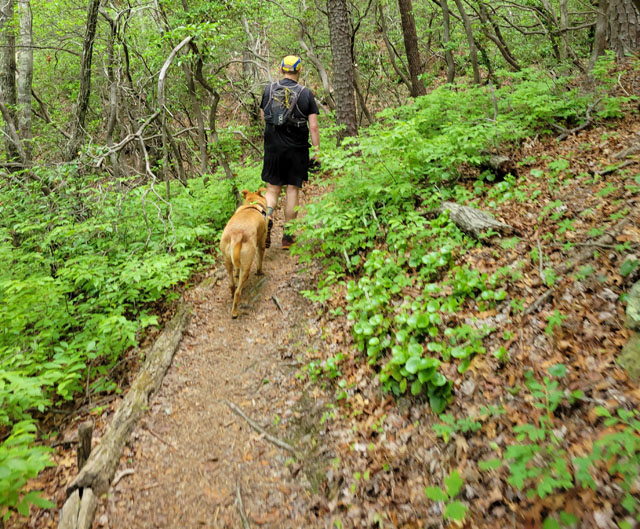
Deep within the Lake Jocassee abyss lay the remnants of an abandoned Appalachian community dotted with roads, cemeteries, buildings, and layered history that dates back to indigenous cultures long forgotten. While recreational boaters, anglers, and paddlers cruise along the stunning 350-foot-deep reservoir, others set out to explore ancient petroglyphs, remote waterfalls, and rare wildflowers. If you prefer adventures powered by your own two feet, then you’re in luck.
One of the most acclaimed National Recreation Trails in the southeast, the Foothills Trail traces the North and South Carolina borders through the most scenic, wild, and rugged terrain you can find. Topping most lists as one of the best multi-day hikes to prepare for a longer outing, the trail offers numerous access points, short day hikes, and even wheelchair-accessible areas ensuring everyone can enjoy the trail in their own way. No matter what you’re into, this 77-mile footpath has something to offer everyone.
The History
Filled in 1973, the creation of Lake Jocassee was a joint project between the state of South Carolina and Duke Energy. The dam measures nearly one third of a mile and stands some 400’ tall. The lake, fueled by water from the Whitewater, Thompson, Horsepasture, and Toxaway rivers, also boasts many of the state’s fishing records. Understanding the lake’s history is key to understanding the evolution of the Foothills Trail.
As the lake was developed, a pumped storage facility was also quietly proposed in the background. In simple terms, during times of low energy demand, surplus power can be used to pump water uphill into a separate reservoir at higher elevation. When needed, the water can then be diverted downhill to secondary turbines to provide a rapid burst of energy to the power grid. The strategy is especially useful on the warmest summer afternoons when additional energy is needed to keep air conditioners running, both for consumers and commercial businesses. Conversely, during extreme cold snaps, heaters can also put extra stress on the grid. It wasn’t until the proposal for the Bad Creek Project that the Foothills Trail really began its journey.
A registered 501(c)(3) non-profit, the Foothills Trail Conference worked closely with Duke Energy, logging companies, and other vested entities to advocate for the creation of a public hiking trail through the corridor that was soon to have not just one, but a second lake constructed even higher in the mountains. As environmental activists protested the massive project, conservationists rallied for the creation of a hiking trail to run alongside these lakes.
The original organization has since rebranded as the Foothills Trail Conservancy and their website notes how trail construction began on Duke land in 1981. It’s vague when other sections of the trail were completed, but many segments were first established during the construction of the lakes.
The Trail
According to the Cherokee, Jocassee means “Place of the Lost One,” though you’d be hard pressed to get lost on the Foothills Trail. End to end, the trail both begins and terminates in South Carolina state parks where you can find full amenities such as campsites, restrooms, visitor information, and plenty of day hiking options. Numerous paved road crossings offer plenty of access, and those accustomed to driving unpaved roads can reach the more remote parts of the journey.
For backpackers, the trail is most often divided into a 5 to10-day trek. Though remote, the trail offers several segments with reliable cell reception if you need to amend your plans. While a popular undertaking for experienced backpackers or those planning a longer hike such as the Continental Divide Trail or Appalachian Trail, the trail’s safety draws in a diversity of visitors including older hikers, women’s groups, and plenty of solo adventurers looking for a challenge.
When you’re on the trail, one of the first things you’ll notice is the generous signage and elaborate construction that follows from start to finish. Large iron bridges have been installed over major rivers, overlook platforms offer unique vantages, and steep slopes are often defined by natural wooden and stone steps. The trail is maintained mostly by volunteers with the Foothills Trail Conservancy and the generous donors that help support the projects. In some situations, Duke Energy also supports projects involving more rigorous tasks on the trail, especially when it runs through their property.
The Hike
A complete thru-hike or hiking in sections allows you to enjoy everything the Foothills has to offer. Maps detail popular campsites, and adventurous trail runners even set their sights on completing the trail in one standing. On one such occasion in early 2023, Asheville-based ultrarunner, Rachel Blinn, set the out-and-back FKT (Fastest Known Time) on the Foothills Trail, covering some 155 miles in just over 63 hours. She recalls Laurel Valley as her favorite section due to its diversity, remoteness, and fact that the only way to access that part of the trail is by boat. After her first experience on the trail in 2022, she “could tell there was something very special about it” and wanted to celebrate both the new year and her birthday with a special challenge.
If a weekend adventure is calling your name, another option is to plan a shorter outing, utilizing one of the many campsites along the way. If you’ve set your sights on a weekend trip, areas around the Chattooga River and Gorges State Park boast plenty of connecting trails to help plan a loop instead. With the help of the FTC, printed trail guides, and a little creativity, the options are endless.
If you’re in search of a day hike, the Foothills offers access to several waterfalls, views, and other landmarks. Popular day hikes include Kings Creek Falls, Eastatoe Narrows, Virginia Hawkins Falls, Table Rock, and Upper Whitewater Falls, the tallest waterfall east of the Mississippi River.
For those planning the entire trail, the Foothills Trail Conservancy website includes detailed information on each segment, detailed with flora and fauna you can expect to find, and a list of both volunteer and commercial shuttle services to get from one end of the trail to the other. The trail also makes a great shakeout hike for those planning a longer adventure.
The Locals
Kevin Bischof, superintendent of Gorges State Park in Sapphire, is no stranger to the Foothills Trail. Formerly stationed at Mount Mitchell, Kevin prizes Gorges for its abundant wildlife such as snakes and other reptiles. Hosting one of the largest concentrations of venomous copperheads and timber rattlesnakes in the south, the park remains one of his favorite places to explore. Several miles of the Foothills Trail traverse within park boundaries.
While he’s not quick to divulge his favorite spot, he notes how it is “one of the best places in the park to see Oconee Bells,” a rare wildflower only found in a few neighboring counties in the Carolinas. Kevin also values the Foothills as a “great opportunity to do some long-distance hiking… without the dedication and logistics needed for a longer trail” such as the Appalachian Trail, Continental Divide Trail, or Pacific Coast Trail.
Jeremy Partin, an eastern Kentucky native, recollects on his favorite memories while hiking the Foothills. Little known to most, an abundance of native American petroglyphs lie just a few minutes from the trail as you make your way around Sassafras Mountain. As the highest point in South Carolina, the area is home to the endemic sassafras tree, the original source of root beer flavoring. Today, nearly all root beer is artificially flavored due to concerns of toxic byproducts, however, Native American cultures have used the tree for centuries to remedy a number of ailments.
All in all, whether you’re into ancient petroglyphs dating back nearly 20,000 years, or rare and protected wildflowers sought by botanists, consider the Foothills Trail for your next adventure.


